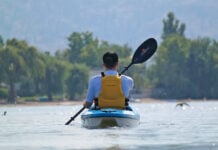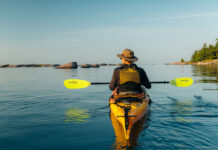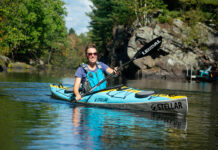It’s demo day at your local outfitters, a chance to get on the water and try out different boats. The catch: the only water nearby is flatwater. How do you translate what this boat is doing on flatwater to what it will do in whitewater?
Simon Coward, whitewater kayak instructor and owner of Aquabatics kayak shop in Calgary, Alberta, offers these tips for making sure your flatwater demo converts into to the purchase of the perfect whitewater companion.
5 steps to find the perfect whitewater boat on flatwater
1 Fit it
Proper outfitting is a key component to feeling comfortable, safe and secure in a kayak. When you are hopping in and out of demo boats, it’s important to take the time to adjust the outfitting so you can get a real feel for the boat.
“With most modern boats the outfitting is pretty turn-key; bulkheads are easily adjustable, back bands are simple to move forward and backward,” says Coward. Bring a footblock for trying out playboats and extra foam shims to help adjust hip pads in creek boats. As long as you can get snug and comfortable in the hips you are good to go, adds Coward.
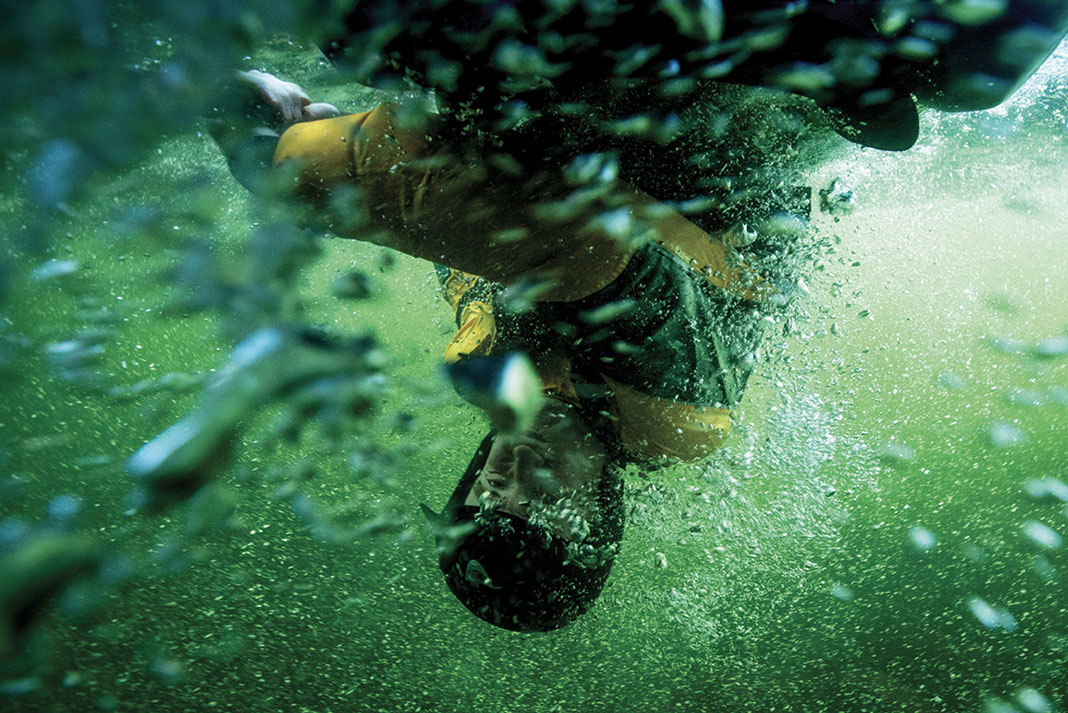
Beware of red flags. This is not the boat for you if you feel uncomfortable, even with a minimal amount of outfitting; if you continually bash your knuckles on the hull; or if the boat feels too big or too small—trust your gut on this one.
2 Paddle it
These flatwater drills will give you a feel for how the boat will handle in moving water.
3 Forward paddle
Take two-dozen forward strokes. Does the boat track nicely? Is the trim balanced, and are the bow and stern even on the water? How quickly does the boat accelerate? It’s important to note that the boats that accelerate quickly may be less maneuverable, adds Coward.
4 Go for a roll
“Many beginner and intermediate paddlers talk about certain boats being easier to roll than others. To some degree this is the case,” says Coward, “though with a really solid rolling technique, it doesn’t make much difference. However, from a confidence standpoint, you want to know you are comfortable rolling the boat.”
5 Put it on edge
Practice edging the boat. See how the kayak transitions from sitting flat (primary stability) to on edge (secondary stability). Is it a smooth transition? Is it balanced on edge? Get a feel for the tipping point of the boat by putting it on edge while paddling and practicing a low brace. This will help in finding where the secondary stability fails. Consider this: boats with very defined edges offer more primary stability, however have less secondary stability than boats with less defined edges. “Carve some circles and get the boat on edge with some speed,” says Coward. “The boat should feel balanced on edge and should accelerate easily.”
Carmen Kuntz is a freelance writer and kayak instructor at the Muskoka Kayak School.
Speed dating. | Feature photo: Jordan Manley



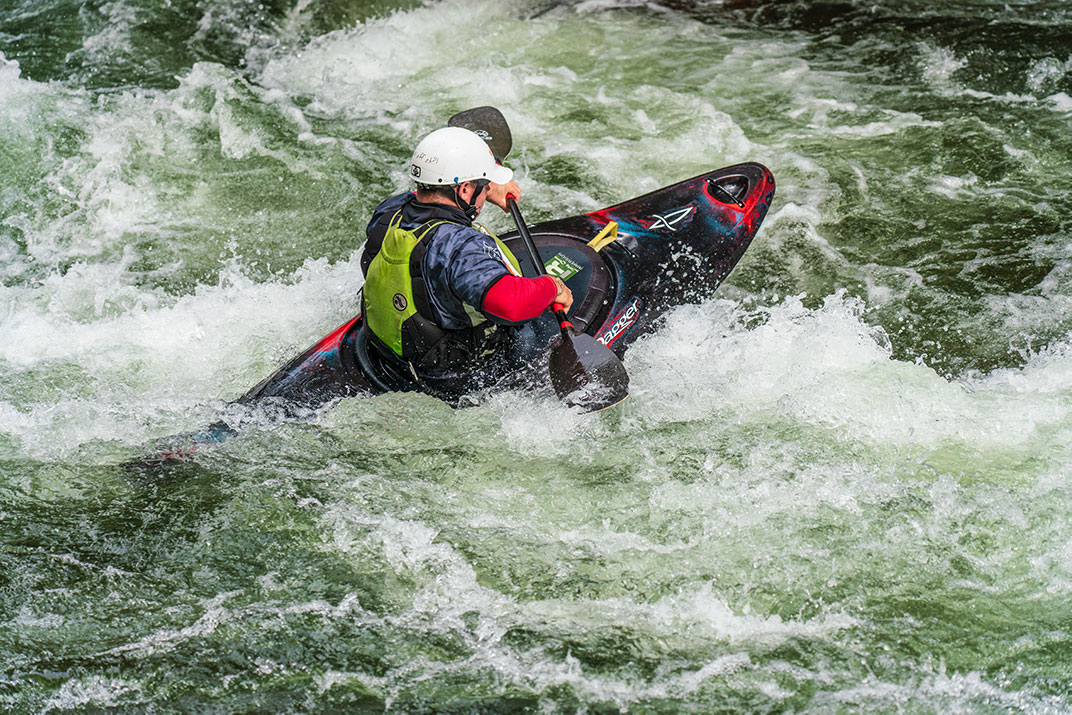
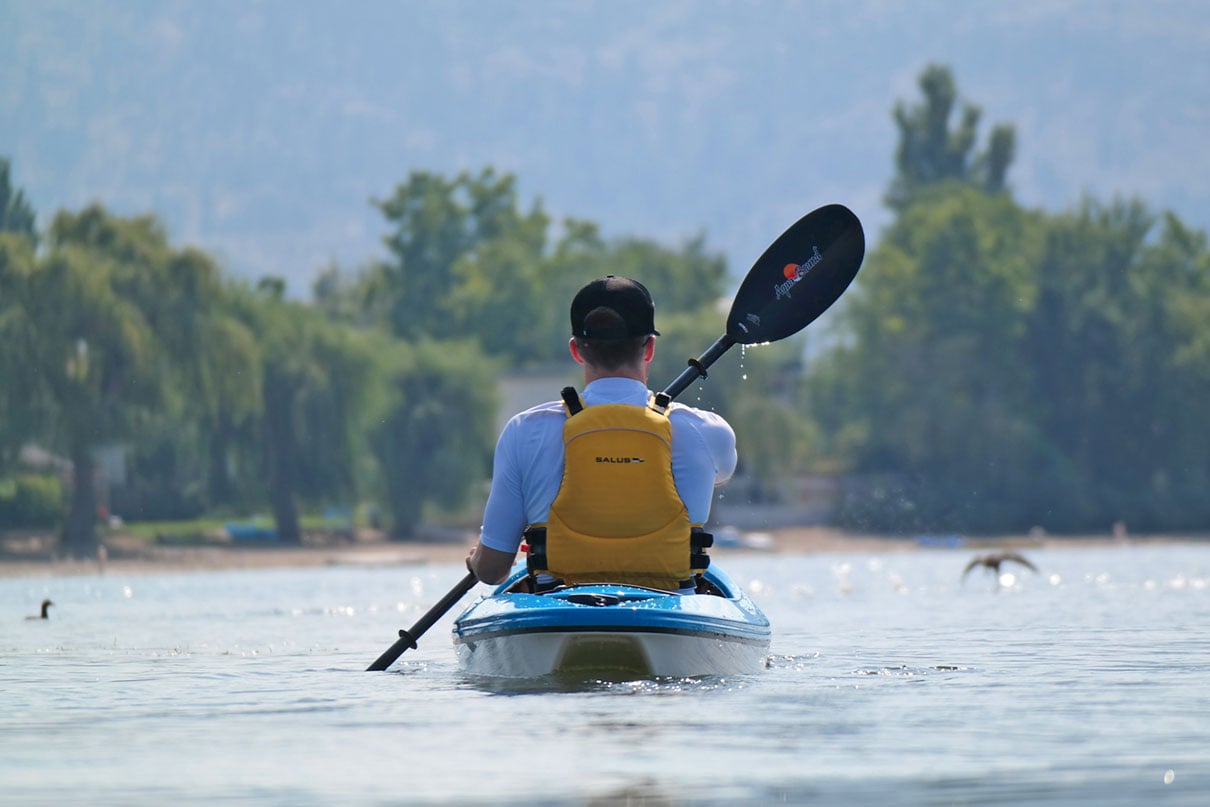
 This article was first published in the 2016 Paddling Buyer’s Guide.
This article was first published in the 2016 Paddling Buyer’s Guide. 
